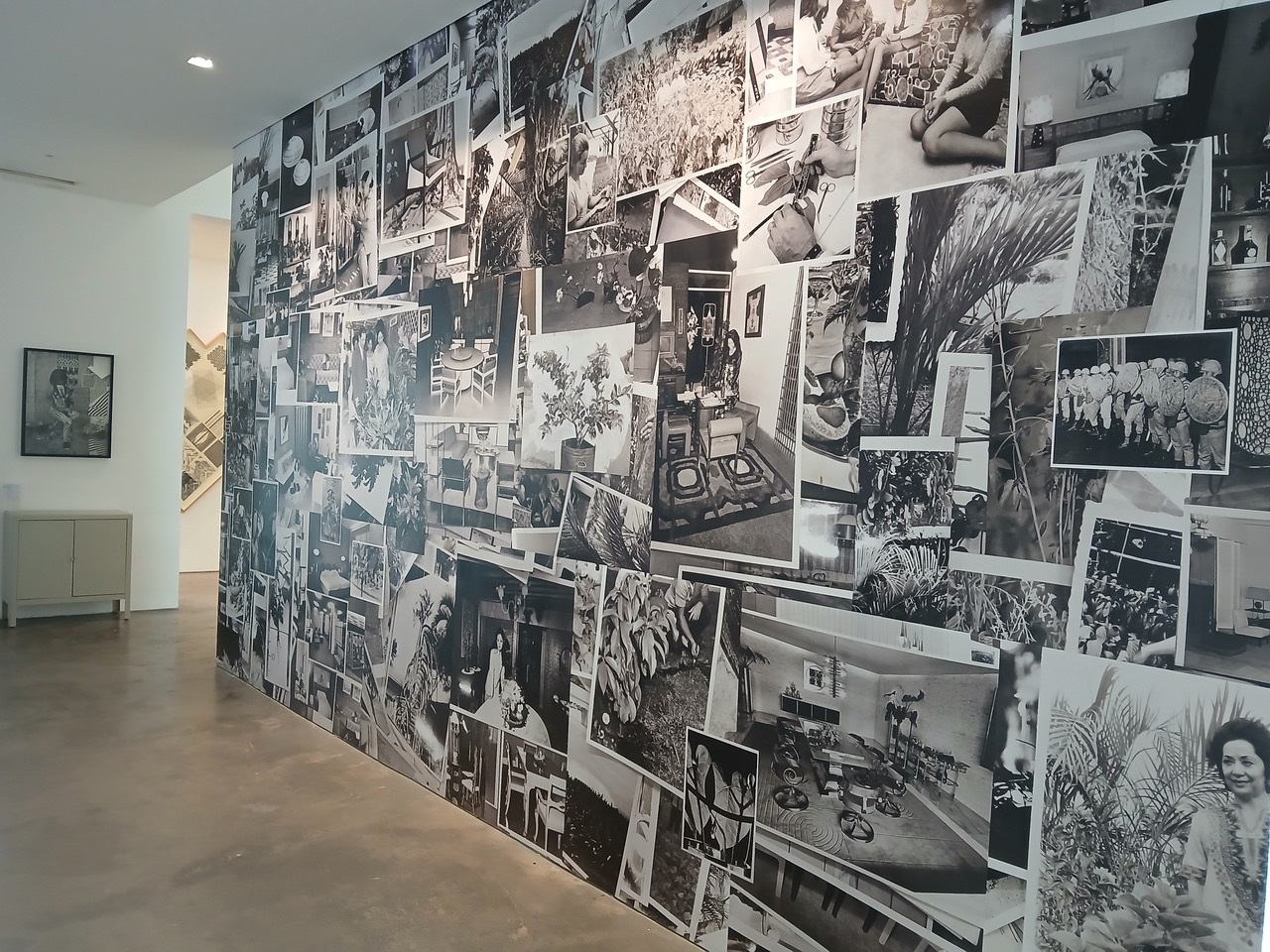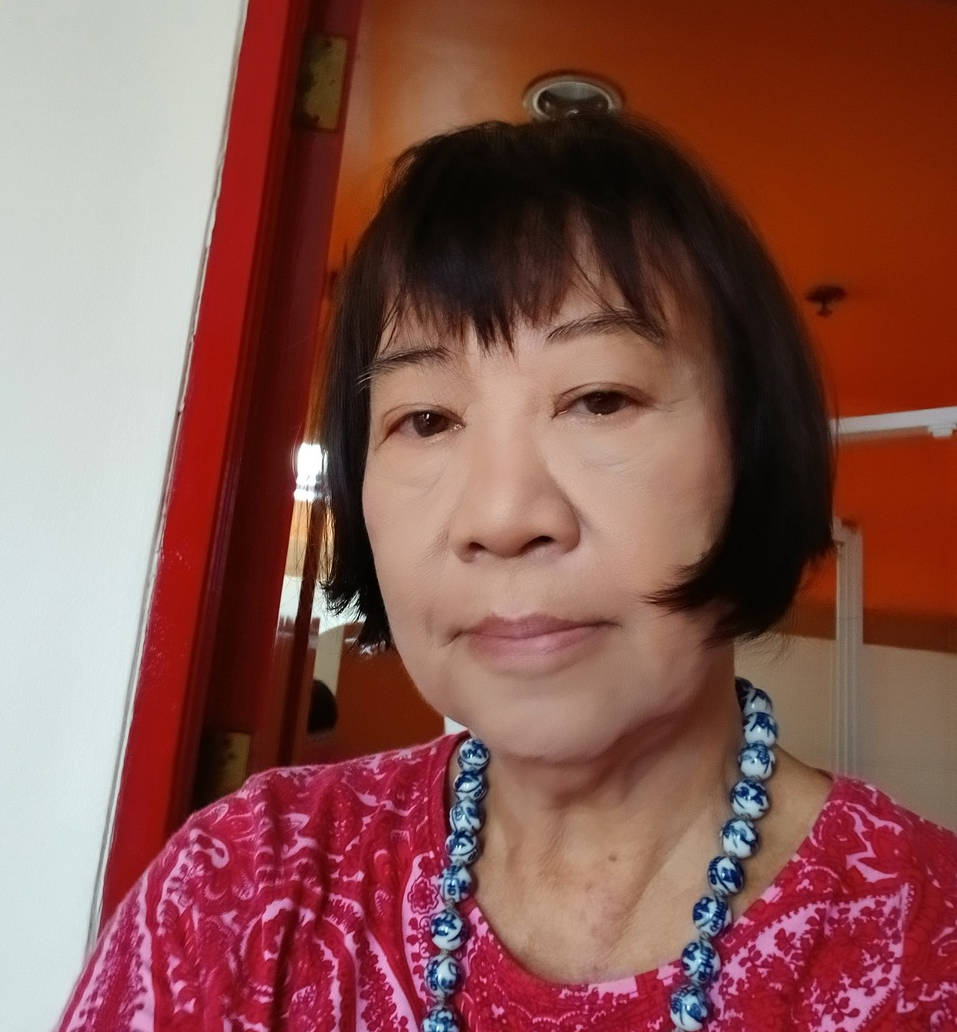All kinds of images surround us today, a barrage of visual noise that we have taken for granted as part of everyday banality. And yet, there is something about old photographs that capture history in the making, and catch our full attention.
Stephanie Syjuco’s first solo show in the country, a photographic series titled Inherent Vice, runs until 5 October 2024 at Silverlens Galleries, Makati.
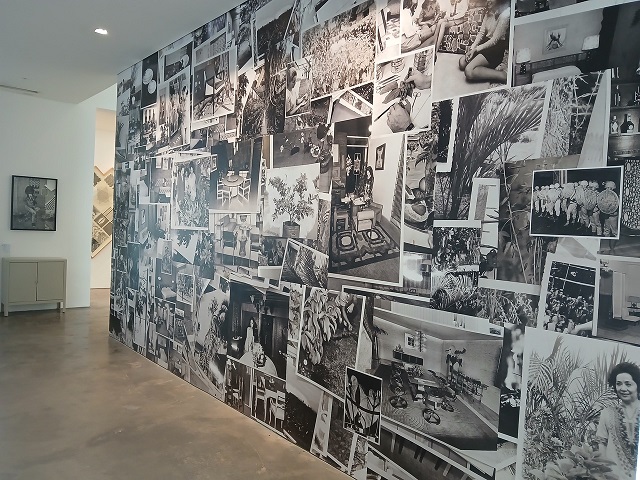
Analog power
She explores images from the late 1960s-1972 from Manila Chronicle’s photo morgue at the Lopez Museum and Library that houses archival materials for Filipinos by Filipinos, as “the visual representation of a young nation trying to define itself, as captured by photojournalists.”
A major Philippine newspaper, Manila Chronicle (1945-1972) was forced to close in 1972 with the imposition of martial law by Ferdinand E. Marcos.
The tumultuous period of 1969-1972 witnessed drastic inflation and social unrest underscored by student protests, class boycotts, and nationwide demonstrations. The period also witnessed the First Quarter Storm, the Diliman Commune, the Plaza Miranda Bombing, the imposition of martial law, the arrest of activists and opposition leaders such as Benigno Aquino Jr and Jose W. Diokno, and the closure of mass media. Violations of human rights leave its trail of repercussions to this day.
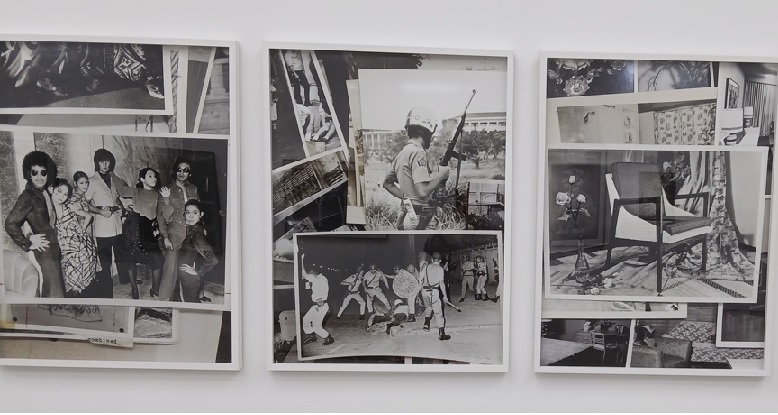
Counter-narratives
The diverse images selected by Syjuco consist of young people partying and wearing fashionable clothes, fancy hairstyles, riot police ready for action, farm workers, agricultural products, beauty pageants, student activists and politicians, tropical gardens, decorative plants, and the interior design of Manila’s affluent.
In Syjuco’s notes, hair, ornament, beauty queens, furniture and home décor act as metaphor “of opulence and cosmopolitanism” and also, of privilege.
With Syjuco’s process of being meticulous and conceptual, the exhibit offers a montage of counter-narratives, a visual stream-of-consciousness of images that have been rephotographed, resized, and digitized from the seemingly objective photographs of a newspaper collection.
In doing so, Syjuco offers a new context to such images that informs each person’s reception and remembrance of events in history. And for those who were born after 1972, the exhibit remains a photographic expression of reflection and discovery.
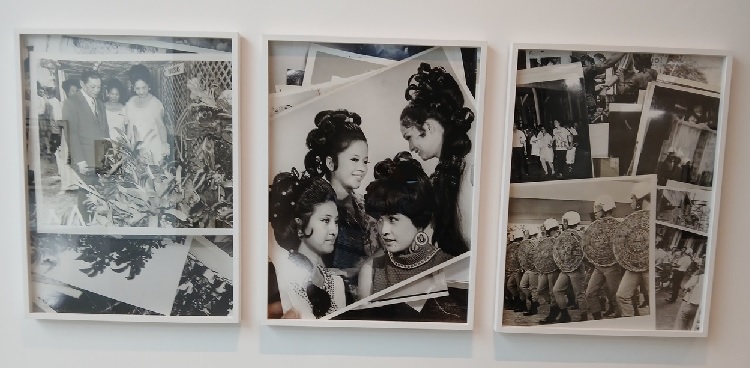
The exhibit
Displayed in groups of twos, threes, or fours, the contrasting photographs are arranged intentionally side-by-side: classy interior design, fashion or hairstyles of the time, riot police with their guns, truncheons, and bamboo shields. Some photographs are overlaid against blown-up negative images of riot police in action.
A photograph of a young Ninoy Aquino in multiple shots is displayed next to a photograph of a galaxy explosion, and its chaotic celestial repercussion, mirroring the political fallout and chaos that ensued with Aquino’s assassination and the subsequent People’s Power that toppled the Marcos dictatorship and the Marcoses’ forced exile.
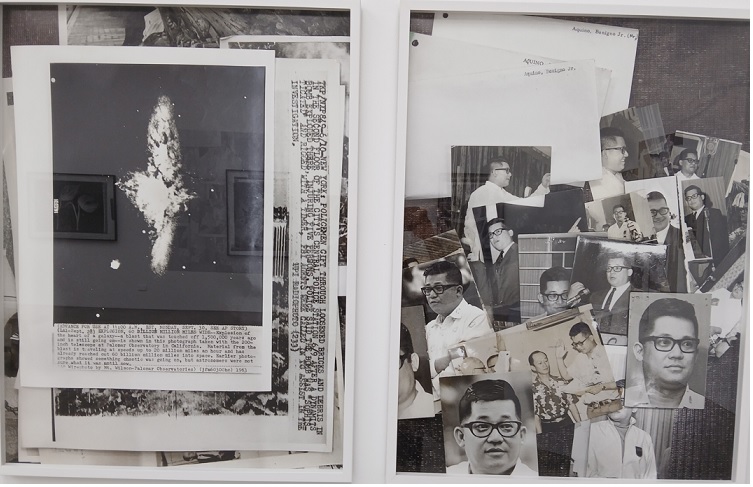
Two related bodies of work are on display:
In Inherent Vice, Syjuco leaves the pictures as they are, unedited, with all material evidences of its handling through many hands, (journalists, editors, librarians, researchers) with editorial marks, handwritten labels, and partial envelopes. Its physicality remains powerful, corresponding to something that was “real” and events that “actually happened.”
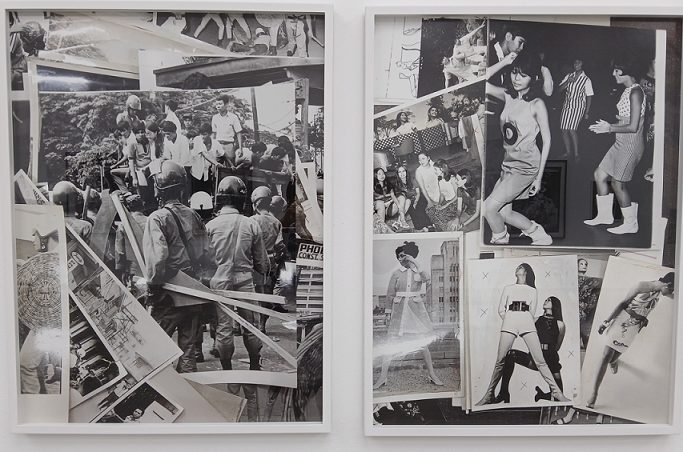
In Force Majeure, the artist employs the metaphor of tropical plants associated with colonial botanical illustrations conveying the richness of a colony’s natural resources and the imperial urge to claim possession.
With Syjuco’s digital intervention, decorative plants are superimposed with snippets of news captions (student leaders, demonstrations, protecting Malacañang, riot police on standby…). Its texts are barely discernible, and yet they exist, as a reminder to never forget that time in history.
The green foliage acts to soften or even hide acts of violence by the police— the pleasing aesthetics of the natural world used to cover up authoritarian power and violence.
Interior designs of living rooms, bedrooms, and dining rooms of Manila’s rich complete with paintings on walls, plush carpets, and jar collection, and well-maintained gardens offer a jarring contrast to the dirty and polluted streets of Manila, where protesters and authorities converge.
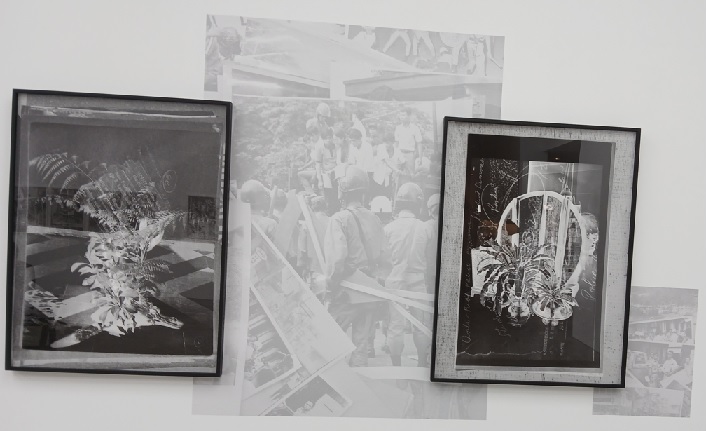
Stephanie Syjuco (b.1974, Manila): She works in photography, sculpture, and installation that entails digital editing and archive research. Initially, she explored image-based processes and their implications “in constructing racialized, exclusionary narratives of American history and citizenship.”
She has shifted her focus to the history-building and myth-making by Filipinos with their independence. From critiquing images of American colonial empire in the Philippines, to investigating historical museum collections and newspaper archives, Syjuco’s projects attempt “to reframe and ‘talk back’ to the archive.”
Immigrating to the United States with her mother at the age of three, Syjuco received her master of fine arts from Stanford University and bachelor of fine arts in sculpture from the San Francisco Art Institute.
Her numerous awards include a Guggenheim Fellowship Award, 2014, a Joan Mitchell Painters and Sculptors Award, 2009, and a Tiffany Foundation Award, 2020. She was a Smithsonian Artist Research Fellow at the National Museum of American History, Washington DC in 2019-20. Residing in Oakland, California, she is an associate professor in sculpture at the University of California, Berkeley.
